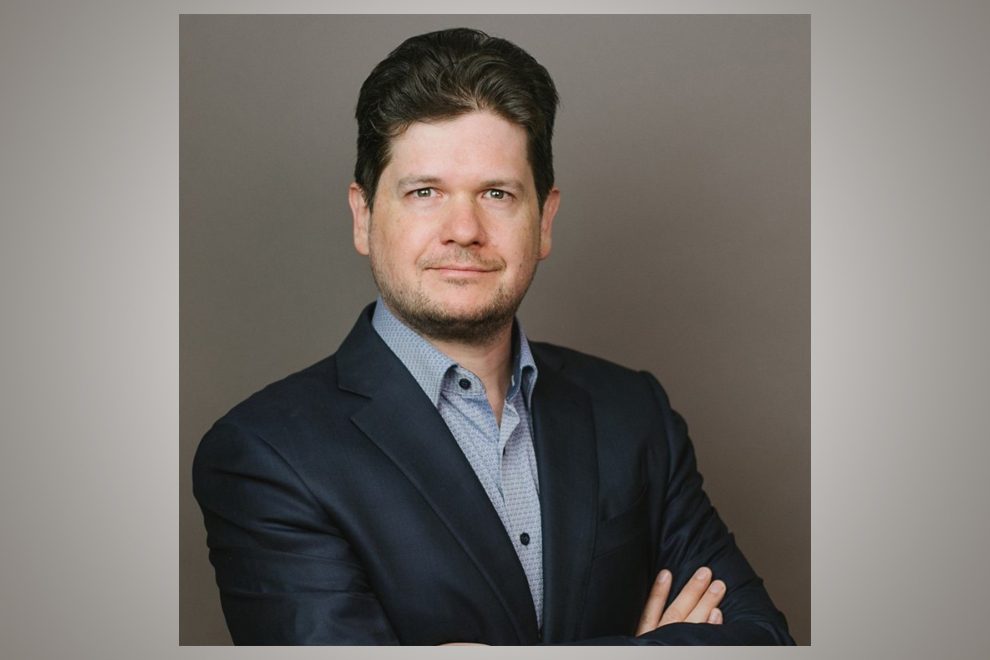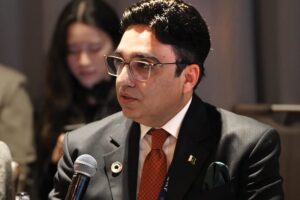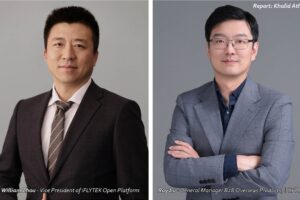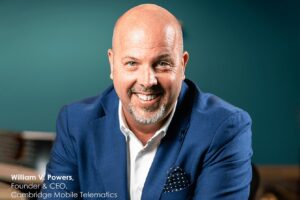Exclusive Interview by: Teletimes International
1. Where do you see the future of 5G technology is heading?
5G is already, with NSA and SA, the fundament and guarantee of high speed, high quality and high end customer experience in the 2B and 2C sectors, enabling any to any interconnection and communication. We can see 5G further evolving, enabling new end customer services and quality with every new 3GPP release standardized. For me, the future of 5G technology is the future of intelligent, tailored, efficient and vertical application function integrated connectivity and cloudification in the telecommunication environment.
2. What factors will be of the most impact when 5G is fully implemented?
5G is much more than just “the next telco generation”, it is a full open ecosystem including a modernisation of the infrastructure (cloudification), decentralisation, orchestration/automation and a fully modular eSBA based telco application layer (including new functionalities). This open ecosystem approach allows, as soon 5G is fully implemented, to vertically integrate application functions, to position functionalities where they can best fulfil SLAs and to easily integrate 3rd party components. Additionally, 5G enables new SLA values to be offered, such as ensured QoS bandwidth, latency, jitter, error rate. It allows use of slicing for efficient service deployment, edge computing with local offload and others, so an all in one (r)evolution driving digitalisation, which is maybe the biggest impact.
3. What kind of applications can we expect to see, come from 5G capability?
5G allows, for the first time, the mobile telco industry to utilize highest bandwidth, lowest latency and highest terminal density in a very efficient way, opening up new business opportunities. This changes the way applications are working in the telco environment such as enabling new applications for the 2B and 2C market. First, due to vertical integration of the application, the interaction between application, the end user requirements and the telco network will become closer, allowing dynamic management of SLA parameters. This will change how our current applications will use the network.
Second, new technologies, such as slicing, will allow different SLAs for different applications dynamically managed at the same time, creating a per requirement slice adoption and more efficient use. This means the best/most efficient eco-system architecture is used for each service.
Third, new functionalities, increased capacity and throughput, will allow new applications to be present on the terminals and used by the end customer – direct AR/VR interaction, remote guidance, remote healthcare, remote education, new levels of machine to machine interaction, and machine to man interaction and digital twins, as we demonstrate in our 5G factory.
4. What industries or sectors can we expect to experience substantial change/improvement due to 5G?
I do not see the impact of 5G limited to a specific industry or sector, I think 5G improves the availability, quality, density and speed of communication in general.
5G has the ability to change the way we use communication, for example for smart cities, smart metering, industrial and campus environments and private households. Basically it provides fast, low latency, high security and high quality connectivity everywhere, for all kind of use cases.
We are, for example, using 5G to produce 5G in our 5G radio factory, meaning the factory is 5G covered. This coverage is used by the environment, including AR/VR, digital twin, remote consultancy and others to produce 5G RAN connectivity. We also see huge benefits in providing high quality services to decentral points, such as remote healthcare, remote education or tourism, visible in our trials and live deployments already.
5. How does the telecom industry anticipate this new speed and power impacting their business models?
This fully new ecosystem, not limited only to speed and power, enables a total change of the business model – from connectivity provider to service enabler or even to service provider. The operators are already preparing and some are already prepared. Operators are building for the 2B Market “Network + Middle Platform + Application” 5G product systems and focusing on the key industries to build varied demonstrative projects. Or for the 2C Market promoting 5G innovative applications and providing good-experience customer services for 5G subscription.
6. How will 5G meet business needs, such as supporting IoT or remote healthcare applications, effectively in an emerging market environment with evolving regulations and infrastructure constraints?
5G is the most flexible and variable telco ecosystem ever designed. With slicing it is able to tailor the ecosystem to the application function’s needs. With the variety of radio modules driven by 5G technologies the “right” technology for the “right” application can effectively be selected from 2TR to 64TR. With hyper condensed infrastructure as e.g. for the ZTE i5GC, a full 5G can be installed on one single COTS server. With the openness driven by eSBA, same as the Layer2/3 decoupling, a flexible architecture can be built. All this allows to tailor the 5G network to the real needs.
7. What upcoming 5G innovations are you most looking forward to that will improve our experience?
The most impressive innovation is a combined network and user orchestration, which allows the user to get the resources his currently utilized application requires in real-time based on AI – for perfect experience and best network efficiency.
8. Why is virtualisation important for the future of cloud evolution?
Virtualisation/Cloudification is the fundament for a telco-cloud, enabling operators to flexibly deploy or modify, slice and eSBA based new service architectures with lowest time to market and highest efficiency in an open environment. To enable the full strength of 5G, the ability to modify service offers and business processes fast and benefit from the openness of the Layer2/3 decoupling virtualisation/cloudification is mandatory.
9. What do telcos need to do so they work towards their goal faster than before, by 2025?
To be faster, more flexible with better time to market, it is essential to remove silos. They must establish cloudification, orchestration and force the digital transformation of the company, including training teams and adopting the processes in the company for more efficiency. Basically, doing a digital transformation.
10. What are the key concepts and benefits of cloud evolution for 5G+ MEC?
To utilize 5G SA to its best, including the performance and flexibility it provides, it is essential to have a unified open telco cloud as fundament for the full ecosystem. The key concept is a hyperconverged integration, combining compute, storage and OVS/R in the COTS based cloud infrastructure, providing a hybrid virtualisation layer supporting containers and virtual machines. With this concept, a tailored deployment, from lightweight at the edge to full scale on the core, can be realized, all maintained by an E2E service and slice orchestration creating perfect fit automation.
11. Is it worth investing in virtualization technology for 5G+MEC?
An open, unified and tailored virtualisation infrastructure, like our TECS environment, is essential to deploy 5G and MEC efficiently. I see investing in virtualisation for an operator as the mandatory step to be able to use all benefits 5G.
12. What is the future of cloud evolution (5G+MEC) with respect to virtualisation?
The future is a unified, open and flexible telco cloud ecosystem, supporting containers same as virtual machines on a hyperconverged infrastructure, to enable tailored application deployment, near real-time e2e service and slice orchestration. It combines public and private clouds and allows a on demand based service deployment orchestrated by a unified service orchestration, able to utilise all infrastructure resources.
13. What kind of challenges can you anticipate by adopting this strategy?
The main challenge is to get rid of the silos in the operator, to find a unified solution able to be used by all applications of the operator. A second hurdle is the openness aspect which is the key for a future prove solution, specifically the layer3 decoupling.
14. How can we deliver and maintain broadband access at a cost-effective level, including both mobility and fixed broadband services, to enable successful digitalisation in all sectors of our society?
The existing telco networks already are supporting a various set of carriers from 800 to 2600 Mhz, with 5G 700 and 3500MHz added to this list. For the new frequencies it is important to do a tailored deployment of the frequencies and the correlated radio modules (64/32/8TR depending on the capacity needs). For the existing frequency, the main intention is that the existing equipment support 5G, so a smooth enabling of 5G is possible layer by layer (following 38.101-1 and the chipsets for the possible combinations). DSS and SuperDSS in addition allow the smooth enablement of 5G in one carrier. All this allows the delivery of high 5G capability in a cost effective level.
15. With the year ending and you weighing it all up, what do you think we can expect in 2022?
More operators deploying 5G NSA, and a focus also to 5G SA. New opportunities on the campus 2B market and vertical integration will be, from my perspective, the focus of the first half of 2022.
16. What is your experience with 5G in Europe?
In Europe, operators are focusing on 5G NSA. 5G SA, the 5G, enabling the full benefits of 5G itself is starting slowly and with it, vertical integration same as industrial implementation. Nevertheless some operators, also including our customers are front-runners on the 5G technology, utilizing and offering 5G SA, campus solutions same as the full 5G ecosystem.
17. How does the implementation and testing for 5G compare to America and Asia?
Due to different focus, frequency ranges and use-cases it is difficult to compare the progress.
18. Where do you think we can expect to see the most success when it comes to providing 5G services to customers?
Within the B2C sector, it will be customers demanding the highest performance, and latest technology. Whereas, within the B2B sector, complex communication processes, with the highest SLAs, quality and security requirements.
19. Do you think that companies providing telecom services will lose or gain customers when it’s time for everyone to switch over (5 years from now)?
With the move from 3G to 4G, I was not able to detect a significant customer migration. So I would say, as long similar services will be provided by telecom service providers the customer distribution does not depend “only” on technology.
20. Where do you see Europe comparing well in terms of telecommunications?
Europe is the home of many top operators. They are the pioneers of the evolution in the telecommunication industry. And they usually understand users very well and have a deep vision of future progress. Cooperation with them will enable us to lead the innovation and promote the state-of-art product solution.












